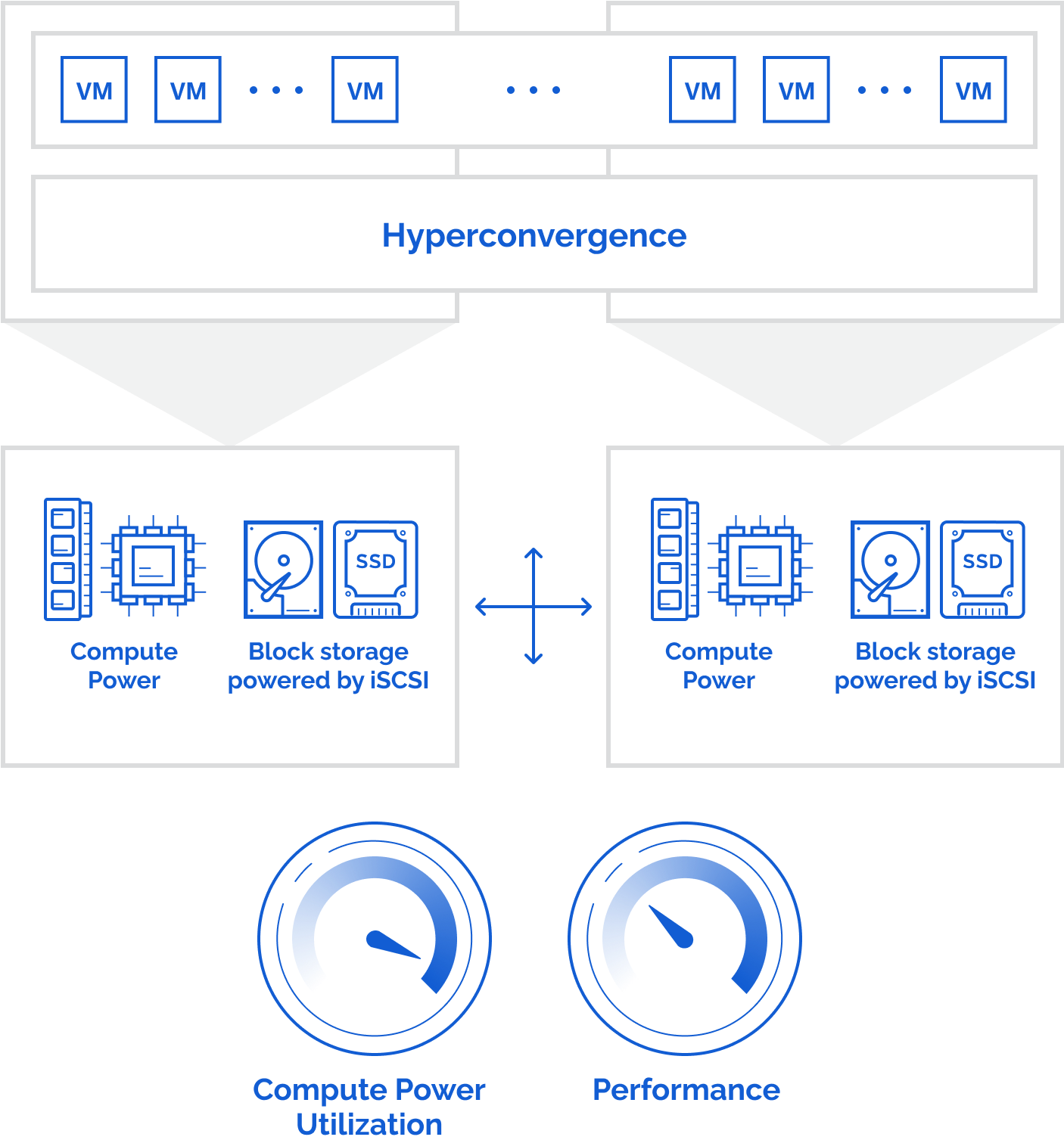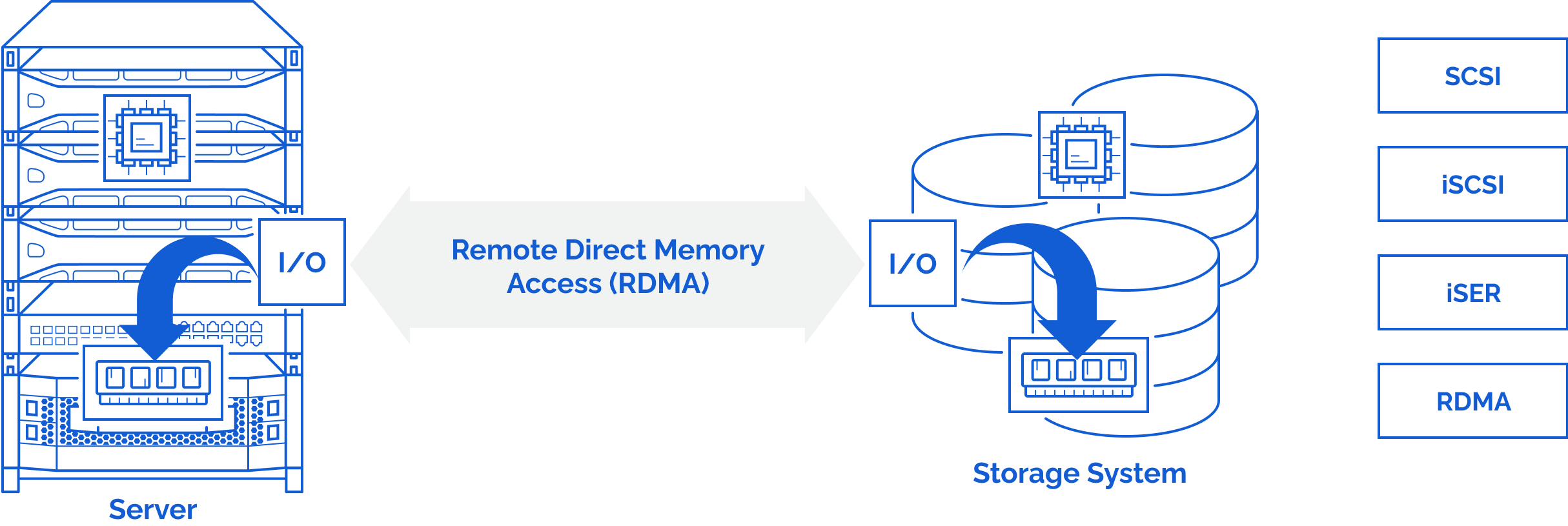StarWind iSER
- December 28, 2017
- 4 min read
- Download as PDF
INTRODUCTION
It’s common knowledge that storage technologies have taken a giant leap forward over the past several years. SSD and NVMe are becoming a standard rather than a novelty, which opens up new possibilities for mission-critical and cutting-edge business IT. Given that enterprises run their workloads over distributed infrastructures, such a trend immediately triggered the development of new storage transport protocols. One of such protocols is iSCSI Extensions for RDMA, or simply iSER.
PROBLEM
Nowadays, iSCSI technology simply cannot provide a sufficient level of performance a modern storage needs. Especially, when it comes to fast flash and super-fast NVMe drives.
 High compute resources consumption with iSCSI serving SSD and NVMe storage
High compute resources consumption with iSCSI serving SSD and NVMe storage
All the applications that use iSCSI over TCP are processed by the CPU, so the data paths for iSCSI, as well as TCP, UDP, and NFS protocols, all must wait in line with other applications and system processes for their turn. This chokes up the network, and the system suffers from data-copy-overhead that causes latency issues, and, subsequently, poor performance. The use of iSCSI also ends up in high CPU utilization. In hyperconverged platforms, this problem becomes even more acute since all the compute resources are shared between the applications and the infrastructure. If there’s a per-core licensing model in question, building such a system will result in wasted costs. In addition, it leads to low ROI and high OpEx.
SOLUTION
iSER has been designed specifically to improve iSCSI by leveraging the RDMA protocol suite. Now, it presents higher performance and the lowest latency by means of eliminating TCP/IP processing overhead and bypassing the CPU of the target system entirely. Apart from this, iSER doesn’t change the existing storage allocation and consumption methods, leaving both iSCSI management and architecture the same.

Direct memory access with iSER utilizes minimum compute resources.
Following the latest storage industry trends, StarWind added the support of iSER. StarWind iSER supplies higher bandwidth for block storage transfers by taking advantage of all the RDMA protocol’s features. As the result, it shows extreme performance in clustered systems. Therefore, such tasks as VM migration or data and VM replication become faster and easier to perform. Moreover, iSER keeps the existing iSCSI management instruments and maintains such advantages of the protocol as chap, access lists, multipathing, and high availability. This allows configuring a high-performing and redundant system. Finally, it significantly unburdens the CPU. This means that now more CPU power is available to your applications and fewer CPU cores are needed for a high-performance compute platform. This is crucial for hyperconverged infrastructures, where applications, storage, and data services have to share the CPU power.
СONCLUSION
With the support of iSER, StarWind ensures high performance even for the most demanding of your applications. At the same time, it guarantees effective usage of the system resources resulting in much lower TCO. On top of that, it fully utilizes flash and NVMe storage capabilities thereby visibly improving your ROI.

